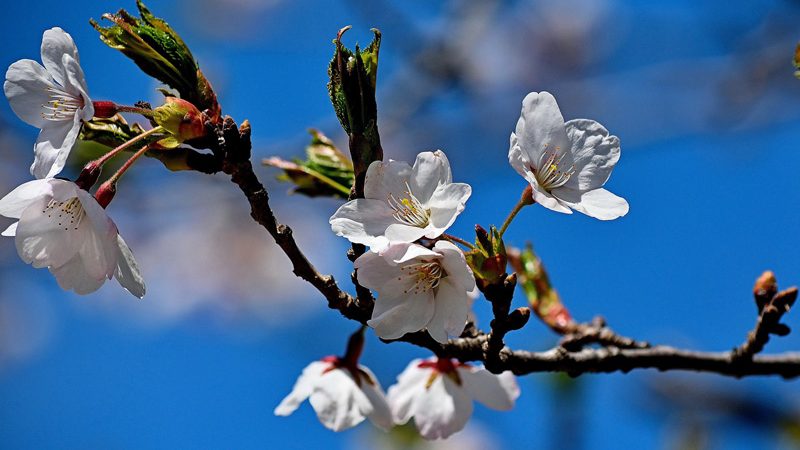Steady medal pace expected in Sochi instead of last-minute stampede of 2010
Posted February 6, 2014 1:10 pm.
This article is more than 5 years old.
Canada was a second-half team at the 2010 Winter Olympics. The medal intake in Sochi is forecasted to happen at a more measured pace.
Starting with Saturday’s men’s snowboard slopestyle and women’s moguls, Canada has at least one legitimate medal shot, if not more, virtually every day until the closing ceremonies Feb. 23.
Chef de mission Steve Podborski and his assistants Jean-Luc Brassard and France St. Louis intend to be present at events where a Canadian is a front-runner for a medal.
“I would say we’re booked every day,” Podborski said at a Canadian Olympic Committee news conference Thursday.
The host country won 18 of its 26 medals in Vancouver during the back half of the Games. Ten of the 14 gold medals came in the second half, including four on the final weekend.
Sports making their Olympic debut helped balance the schedule of Canada’s medal prospects in Sochi.
Men’s and women’s snowboard slopestyle, the figure skating team event and the luge relay are among the new events over the first eight days of competition in which Canada has solid medal prospects.
That’s in addition to Canada’s strength in the entrenched sports of alpine skiing, moguls, short-track speedskating and cross-country skiing.
“Sure there are new sports and we happen to be very, very good in the new ones because we are a great sporting nation,” Podborski said.
“With the support we’re getting now from corporate Canada, Own The Podium and the Government of Canada, we have an opportunity to be good in the traditional sports as well and that’s where we’ll make our great gains in the areas where are athletes are getting better . . . cross-country, alpine skiing.”
Canada’s athletes have been waging fierce foosball tournaments in their village lounge while they await Friday’s opening ceremonies, according to Podborski. But Olympic competition started early for some Canadians with Thursday’s preliminary rounds.
Sebastien Toutant of L’Assomption, Que., and Max Parrot of Bromont, Que., advanced to the men’s snowboard slopestyle final Saturday, while Charles Reid of Mont-Tremblant, Que., and Regina’s Mark McMorris will attempt to join them via the semifinal earlier in the day.
The Dufour-Lapointe sisters from Montreal — Justine, Chloe and Maxime — all qualified for Saturday’s women’s moguls finals as did Audrey Robichaud of Quebec City.
Reigning world champion Spencer O’Brien of Courtney, B.C., qualified for the women’s slopestyle final Sunday.
Hockey Canada also made the decision to replace injured forward Steven Stamkos with Tampa Bay teammate Martin St. Louis.
No competition is scheduled Friday because of the opening ceremonies.
In addition to slopestyle and women’s moguls on opening weekend, skiers Erik Guay of Mont-Tremblant, Que., Calgary’s Jan Hudec and Manny Osborne-Paradis of Invermere, B.C., are medal prospects in Sunday’s downhill.
Canada’s figure skaters are favoured to win a medal in the new team event Sunday.
Canada’s objective in 2010 was to top the overall medal count and the target remains the same in Sochi. The host team was third in total medals, but won the gold-medal race four years ago.
Because of the new sports, there are 36 more medals to be won in 2014 than in 2010. That will help fill Canada’s coffers, but also those of top rivals Germany, Norway, the United States and host Russia.
“Canada is here to compete and win,” COC president Marcel Aubut said. “Our aim is to contend for the number one spot in medals won.”
“This is an ambitious goal, but we Canadians like it this way. Our athletes expect nothing less of themselves but the highest achievements.”
Added Podborski: “You don’t try to come “somewhere up there.” We expect great things in Canada now. It’s an ideal approach.
“We may not win the medal count this time. We may not win it the next time but one day we will because we are striving to be number one in the world in the medal count.”
While Canada’s preparation for 2010 seems a successful model to copy for Sochi, the Canadian Olympic Committee took a different approach.
The 2008 Summer Games in Beijing posed similar challenges to Sochi in terms of distance to travel, time-zone difference and unfamiliar language, food and culture.
Virtually all of Canada’s Olympians competed, trained or at least visited Beijing in the year prior to those Games to get comfortable with the place.
The same practice was done for Sochi. There was less emphasis on pre-Games visits for the 2012 Summer Games in London.
“If we look at the Beijing experience and we look at the Sochi experience, it’s actually very similar,” COC chief sport officer Caroline Assalian says. “New and unfamiliar environment for most countries.
“We ensured that the athletes and support teams as much as possible are familiar with this environment.”
The COC has conducted exit interviews with athletes, their coaches and support teams following Olympic Games since 2006 to better plan for the next. The athletes were asked “what made the difference in your performance?”
“Their number one factor? Feeling part of a larger unified team, more than anything,” Assalian said. “That’s what made the difference for them. Coaches and support team? Familiarity with the Olympic environment.”
And where Beijing was also a benchmark for Sochi was in Canada’s conversion rate, which the number of athletes ranked in the top five at their most recent world championships make it onto the podium at the subsequent Olympic Games.
The COC employs conversion rates to compare how Canada’s athletes are performing compared to other countries.
Even though Canada won just 18 medals in Beijing, the conversion rate there was 67 per cent compared to 59 per cent at the Winter Games of both 2010 and 2006, according to Assalian.
The Canadian team needs at least match Beijing’s conversion rate to be in the hunt for the overall title in Sochi.
“Our bar now is Beijing,” Assalian says. “We know we need to convert better than we ever have at any Winter Olympic Games.”
The Canadian team will attempt this without the advantage it had in Vancouver and Whistler of home ice and home snow.
Own The Podium chief executive officer Anne Merklinger says many winter sport teams have stronger leadership and better coaches since 2010.
Both areas were priorities coming out of Vancouver and Whistler and she hopes improvements there compensate for the additional challenges of Sochi.
“We’ve come a long way in that regard,” she says. “Without coaches, we’re behind the 8-ball. It’s the most important success factor.
“I think there are a number of examples where we’ve brought in great coaches, but we’ve lost some too. We need to find a way to continue to retain the good ones we have and attract new ones.”
“We’re investing in that. That’s what it takes. It’s a competitive industry.”
OTP oversees athletes’ competitive lives between Olympic Games and allocates about $62 million a year in federal government funding between summer and winter sports.
The COC prepares athletes for the Games environment and looks after their needs and wants on the ground in Sochi.










